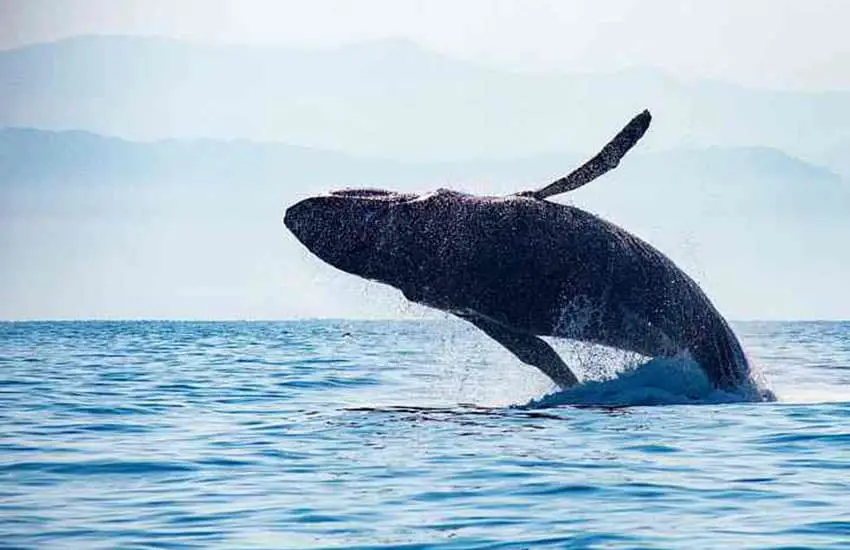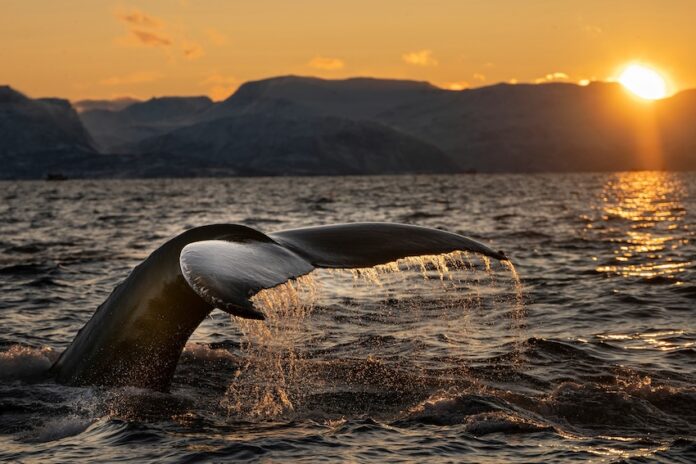When vacationing in Mexico, visitors often search for new experiences, no less so when visiting coastal regions. Although lying on a beach soaking up the sun and drinking margaritas can appeal to some, boredom can quickly set in if you’re not engaging in activities. Whale watching, scuba diving, and fishing are most popular when it comes to water adventure.
On the Pacific coast, December through the end of March are the prime months for catching sight of one of the largest mammals in the world, which come to the region’s lagoons to birth their calves. If you’re very lucky, you may even witness a live birth on an excursion.

On the coast of Ixtapa-Zihuatanejo, Guerrero, where I live, the most commonly sighted whale is the humpback whale. Eager to experience the adventure, I searched for a reputable company to guide me.
There are many options for whale-watching tours in and around this coastal town, including those in Barra De Potosi, 30 minutes away. A total of 60 certified whale operators in the area belong to an organization called Whales Of Guerrero. These operators are highly trained and knowledgeable in the whale-watching tour industry. Unfortunately, many independent tours often lack the correct permits or training to join this important organization. They are usually referred to as “pirates” by those who are. I urge everyone to do their homework when choosing a whale-watching tour; if in doubt, check out the Whales of Guerrero website to obtain a list of certified guides that comply with the strict laws of conduct required when whale-watching.
Armed with this knowledge, I ultimately selected a tour with The Zihuatanejo Dive Center, located across from the pier in downtown Zihuatanejo. The centre is owned and operated by Luis Manuel Pelayo, affectionately known as Poto, a Mexican, and his wife Julieta Trzaska, originally from Poland. The couple has been hosting whale tours on their dive boat, The Red Beanie, for seven years and has garnered an excellent reputation for safety, comfort and all-out fun. They are also a part of Whales Of Guerrero. You can choose morning or afternoon tours for 1,200 pesos, roughly US $58, with an hour or two of snorkelling. I opted for the morning tour, and at 9 am, we set out from the pier on Playa Municipal in downtown Zihuatanejo.
Along for the ride was volunteer Jennifer Wilson-Salazar, owner of Kaleidoscope Tours and Canadian native who married a local three years ago in what I can only describe as romantic fate. Salazar and Poto imparted tidbits of interesting whale facts as we glided smoothly across the ocean, which I found fascinating, given that I knew next to nothing about these magnificent creatures.

For instance, I learned that female whales mate with several whales simultaneously, one right after the other, but the last whale impregnates her. Interestingly, that whale is often the smallest. I also learned that whales weigh five tons at birth and can grow up to 40 tons and live from 80 to 90 years. Humpback whales travel great distances from Alaska and Canada to Ixtapa-Zihuatanejo to birth their young. However, they can venture as far south as Oaxaca. “They do this for two reasons. We have warmer waters, which they love,” Wilson-Salazar told me, “and two, because their main enemy, the killer whale, does not follow them to this region, preferring colder waters.”
The waters were extremely calm on the morning we set out, which Poto told us was ideal for whale watching. As we smoothly crossed the ocean, we glimpsed luxurious villas and homes perched on rocky hillsides to the right and left of us. We passed notable beaches La Ropa and Madera, well known for their excellent swimming and extensive choice of restaurants, and Las Gatas, a seafood lover delight and popular reefs that boasts excellent snorkelling off its shores.
Our guides informed us we would be going towards Barra De Potosi, the small village south of us, which he said was the area where we would more likely catch sight of whales, although rare sightings can also occur inside Zihua Bay itself. In addition to Zihuatanejo, this area is also known for tours operated by other members of Whales of Guerero, who are highly trained and certified in the do’s and don’ts of whale watching.
Poto explained some of the specific rules they must adhere to when they go whale watching, including keeping a safe distance from the whales. Other regulations are that a maximum of four boats can be present when a whale is spotted in the vicinity while others remain in a queue a respectful distance away. Then, after 20 minutes, the boats must depart to allow others to take their turn. “We cannot surround them, and we always approach from the back, not the front. Our boats have to be in neutral gear, and we cannot speed. Most importantly, we must not separate the mother from their offspring. Lastly, we cannot snorkel with the whales, as is permitted in northern parts of Mexico.”

Finally, the eagle eyes of our boat captain, Chava, spotted boats in the distance and a distinct spray in the air, and we headed in that direction. When we were in place, a safe distance from the other tour boats, Chava idled the engine while Poto lowered a waterproof microphone into the water. Immediately, the air filled with hauntingly beautiful whale songs. Enthralled, we watched the backs of a mother whale and her offspring appear several times before diving out of sight. Unfortunately, Poto said they might stay submerged for ten to 40 minutes.
After 20 minutes, we reclaimed the microphone and set off again. We did this several times over an hour, catching glimpses but never seeing whales breaching as we had hoped for. No shade to the operators, of course, as sometimes this can happen, so you must be prepared for it or choose to go out another time. I still found it thrilling to be in such close vicinity to the whales, listening to their songs from above their watery depths.
Afterwards, as part of the tour, we headed to Manzanillo Reef, around the bend from the bay of Zihuatanejo, for an hour of snorkelling. It was a delightful end to a beautiful morning, swimming in pristine clear waters among many species of tropical fish and marine life before heading home, tired but content.
The writer divides her time between Canada and Zihuatanejo.
